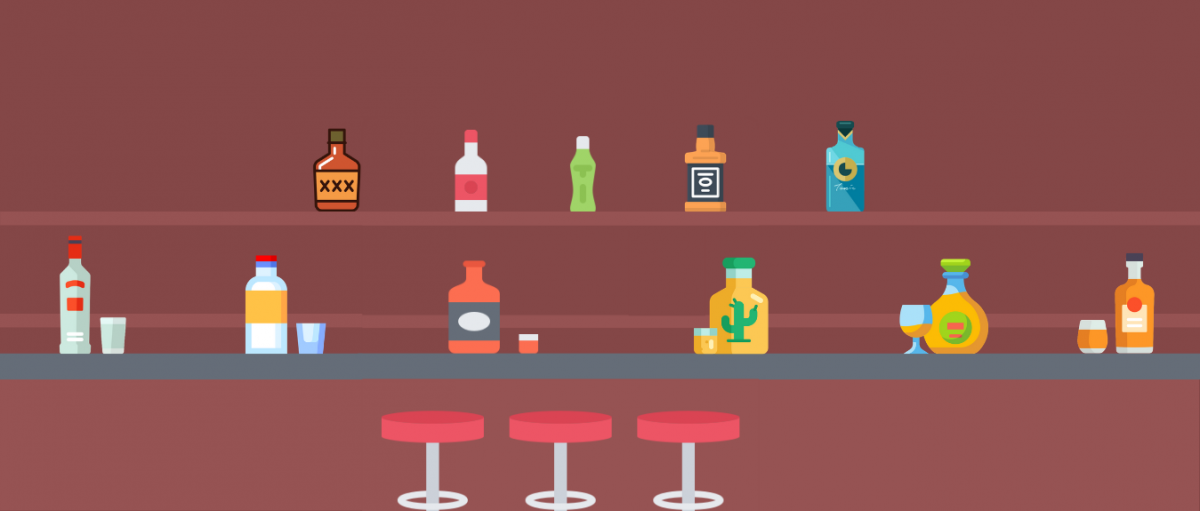Warehouse
Closed
July 10, 2026
Judging
Date
July 26, 2026
Winners
Announced
August 12, 2026

Spirits are special kind of alcoholic liquor with comparatively higher Alcohol by Volume (ABVs) as compared to the wines and beers. Beers generally contain 4-6% ABV, while wine has 9-16% ABV on an average. Spirits generally contain 20-90% ABV. Some very popular spirits that control the spirits market are whiskey, vodka, gin, rum, tequila, brandy, etc. and there is a huge popularity of such spirits in the world spirit market. You may have drunk some of the most prominent and known types of spirits someday in your life. These main liquor types contribute to more than 46% of total spirits sale globally. According to Statista, in 2018, Whisky was on top of net spirit production with net production of 6176.89 Mega Liters. Whiskey was followed by Vodka with net production of 2382.87 megaliters. Brandy stood third with net production of 3982.02 megaliters. Brandy was followed by Rum and Gin with 998.32 ML and 680 ML Respectively.

Apart from these popular spirits, there are some locally produced spirits which are rarely found and scarcely produced and which should be tried. Be it South Asia`s Cashew/Coconut Feni or be it Baijiu from China, there are many spirits that control the local alcohol markets. Statista even estimated the market share of these lesser known spirits to be of more than 50%. Here are some lesser known spirits that you must try.
Feni tops our chart of indigenous spirits lists. It is produced in Goa, India and other southern Indian states. Feni is produced mostly in two forms 1. Cashew Feni and 2. Toddy Palm Feni. It solely depends on the original ingredient; however, many other varieties are sold. The Feni is mostly consumed in South Goa and is generally of higher alcohol content which is approximately 43-45% ABV. Commercially packaged Feni is also available at 42.8% ABV on an average.
Arak is a distilled spirit mostly produced at West Asian in the anise drinks family. It is a translucent white unsweetened anise-flavored drink, which is traditionally made of only two ingredients, grapes, and aniseed. Aniseeds are the seeds of the anise plant, and when crushed, their oil provides Arak with a slight licorice taste. Arak is the traditional alcoholic beverage in Western Asia, especially in the Eastern Mediterranean, as well in Iraq, Syria, Israel, Jordan, Iran, Armenia and Lebanon.
Borovička is a Slovak alcoholic beverage flavored with juniper berries. It is characterized by white or golden color and a taste similar to that of dry gin. It is popular especially in Slovakia and the Czech Republic. Today's commercially produced Borovička contains about 40% alcohol by volume or 80 proof.
Báijiǔ is distilled from fermented sorghum, although other grains may be used. Baijiu can appear similar to several other East Asian liquors due to being a clear spirit, but it often has a significantly higher alcohol content, for example, Japanese Shōchū (25%) or Korean Soju (20–45%). Despite being a white spirit, it more closely resembles a dark spirit like whiskey in terms of complexity and mouthfeel. It is the largest spirit category in the world, with 5 billion liters sold in 2016.
Mezcal is a distilled alcoholic beverage made from any type of agave. Agaves or magueys are found mainly in many parts of Mexico and all the way down to the equator, though most Mezcal is made in Oaxaca. It can also be made in Durango, Guanajuato, Guerrero, San Luis Potosí, Tamaulipas, Zacatecas, Michoacan, and the recently approved Puebla. In Mexico, Mezcal is generally consumed straight and has a strong smoky flavor. Though other types of Mezcal are not as popular as tequila. Mexico does export the product, mostly to Japan and the United States, and exports are growing.
Moonshine was originally a slang term for high-proof distilled spirits that were usually produced illicitly, without government authorization. In recent years, however, moonshine has been legalized in various countries and has become a commercial product. Legal in the United States since 2010, Moonshine is defined as "clear, unaged whiskey", typically made with corn mash as its main ingredient.
Raki is a sweetened, often anise-flavored, alcoholic drink that is popular in Turkey, Albania, Greek Islands and in the Balkan countries as an apéritif. It is often served with seafood or meze. It is comparable to several other alcoholic beverages available around the Mediterranean and the Middle East, e.g. pastis, ouzo, sambuca, arak, and aguardiente.
Horilka is a Ukrainian alcoholic beverage. Horilka is usually distilled from grain (usually wheat or rye), though it can, exceptionally, also be distilled from potatoes, honey, sugar beets, etc. Horilka that comes with chili pepper flavor is called Petsivka
Absinthe is an anise-flavored spirit derived from botanicals, including the flowers and leaves of Artemisia, together with green anise, sweet fennel, and other medicinal and culinary herbs. Absinthe traditionally has a natural green color, but may also be colorless. Absinthe is traditionally bottled at a high level of alcohol by volume, but it is normally diluted with water prior to being consumed. By the early 21st century, nearly 200 brands of Absinthe were being produced in a dozen countries, most notably in France, Switzerland, Austria, Germany, Netherlands, Spain, and the Czech Republic.
Slivovitz is a fruit brandy made from damson plums, often referred to as plum brandy. Slivovitz is produced in Central and Eastern Europe, both commercially and privately. Primary producers include Bosnia, Bulgaria, Croatia, the Czech Republic, Hungary, Poland, Romania, Serbia, Slovakia, and Slovenia. In the Balkans, Slivovitz is considered a kind of Rakia.
The 2025 Winners List is Now Live! Explore the Full List!